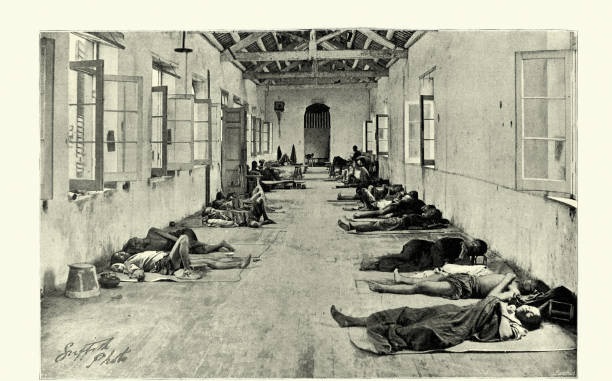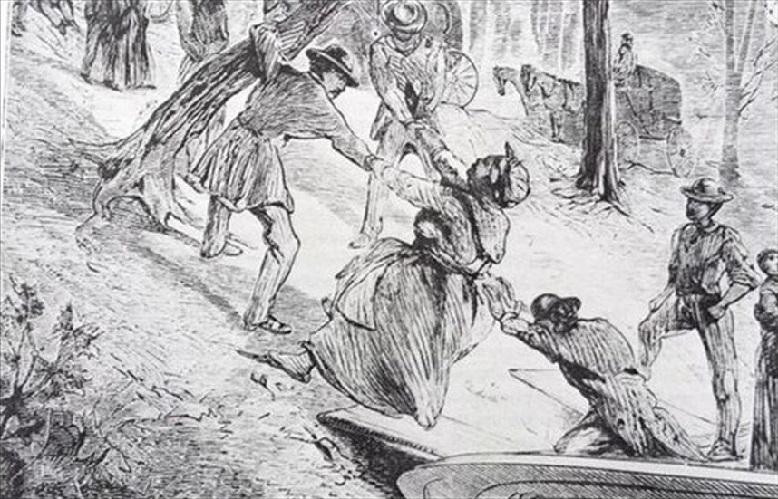7 things that have not disappeared since the Middle Ages

We perceive the Middle Ages as one of the most unpleasant periods in the history of humankind: dirt, disease, hunger, slavery, and the complete absence of anything bright. It’s good that we live in an enlightened time, where there is no room for cruel and stupid things from that dark time. But what if many things familiar to people of the Middle Ages still exist? Here are just a few of them.
Piracy

Piracy began around the same time as the first boats appeared. Over time, from a pack of small bandits, this phenomenon developed into a rich culture that caused many problems for merchants.
By the end of the Middle Ages, piracy began to gain momentum, associated with the discovery of America and the influx of gold. Around the beginning of the 19th century, it began to decline. However, in the 21st century, piracy has not gone anywhere.
And these are not the pirates who download hacked games from torrents, but the real thugs who board ships, steal cargo, take the crew prisoner, and demand ransom. In the first quarter of 2017 alone, pirates attacked 43 ships and took 58 sailors hostage. Every year, pirates’ actions cause damage to the economy of hundreds of millions of dollars or more.
Pirates are often found off the coast of Somalia and in the Gulf of Guinea. And just as medieval sailors avoided the Caribbean islands, modern captains try to bypass the two most dangerous regions and prefer to hire armed guards.
Witchhunt

Of course, this is no longer practiced in the West, but it is often found in Africa. For example, in several countries in West Africa, epilepsy is believed to be a disease of evil spirits, and its only cure is ritual murder.
The same goes for people with albinism living in Africa. In the countries of Central Africa, the birth of a person with albinism is considered a bad sign. For example, in some countries, in Tanzania, Kenya, and the Congo, local sorcerers hunt such people to make amulets, heal amulets, or decoctions from their bones and internal organs.
Moreover, hunting for epileptics and albinos for a long time was considered the norm, as was the similar trapping of “witches” in the Middle Ages. It wasn’t until 2009 that Tanzania delivered the first sentence to the albino killers. Now albino hunters prefer to cut off parts of people’s bodies rather than kill them not to attract the attention of states.
Plague

The Middle Ages are associated with the plague – a terrible disease that destroyed up to half of the entire population of Europe in several waves. Many centuries passed before this disease was defeated. However, even in the 21st century, when it seems that this ailment has remained in the distant past, epidemics periodically arise.
So, for example, in 2020, unnoticed by the media focused on coronavirus, an outbreak of bubonic plague was recorded in the Chinese Autonomous Region of Inner Mongolia. Earlier, in 2017, an outbreak occurred in Madagascar, where more than two thousand people were infected, of which 165 died.
About 2,500 people fall ill with the plague annually, mainly in Africa and Asia. The largest number of cases of plague is recorded in the Congo.
Slavery

Many consider slavery a relic of Antiquity and the Middle Ages, but they are wrong. Slavery not only existed until it was abolished in the United States (one of the least developed countries to prohibit such exploitation of people) – it is practiced in the 21st century as well.
According to the 2016 Global Slavery Index, there were 45.8 million slaves in 167 countries worldwide. To make it clearer, about the same number of people live in Sweden, the Czech Republic, Portugal, Norway, Slovakia, and Denmark.
In addition to ordinary slavery, there is also its modern counterpart. Many people receive such a small salary that they are worse than slaves in ancient Rome.
Nobility and monarchies

When we read about the Middle Ages, we involuntarily dwell on the moments that tell about the attitude of the nobles and their subordinates. It is outrageous that a person who is just lucky enough to be born in the right family is higher than another, even if he is much smarter and richer than his master.
In the 21st century, the nobility has not gone anywhere. Moreover, it is enshrined at the legislative level in some developed countries. As for the forms of government, there are still absolute monarchies, where one person has unlimited power and can send people to death with a gesture.
Privileges are enjoyed not only by the monarchs of the Arabian Peninsula and Asia but also by the rulers of developed countries. So, for example, Queen Elizabeth II of Great Britain can break any laws, not pay taxes and eat swans from the River Thames.
Gender and social stratification
The West is actively fighting this phenomenon, but the world is not limited only to Europe and North America. In many countries of the East and Africa, women are still considered something like a beautiful accessory, and the attitude towards them has not changed since the Middle Ages.
Therefore, they turn a blind eye to the domestic violence of men against women because, you must admit, hardly anyone would start to raise a panic. After all, a neighbor broke a vase at home.
A considerable part of women in these countries is, in fact, in slavery without the right to justice. Just like in the Middle Ages, when you could do whatever you wanted with your wife, without crossing a certain line like severe injury or murder.
As for social stratification, in the modern world, they changed several concepts to sounding more “free” and “human,” but the situation is not much different. Now the lords are millionaires and billionaires who were born in the right families or, with rare exceptions, created their own “dynasty.” Peasants are ordinary workers, for the most part providing only basic needs and deducting a significant part of their earnings in the form of taxes.
Violent entertainment

Bloody shows appeared even when a person first took a stick in his hands and realized that with its help, one could defeat someone who did not have such a weapon. Cruel entertainment reached its peak in Antiquity, but the Middle Ages did not lag with its executions in the main squares.
In our time, medieval entertainment, like beating each other to the point of losing consciousness, has not gone anywhere. Moreover, they are broadcast on television and the Internet, gathering millions of fans around them. Some people like cruelty, no matter who says anything about the humanization of society in the 21st century.




